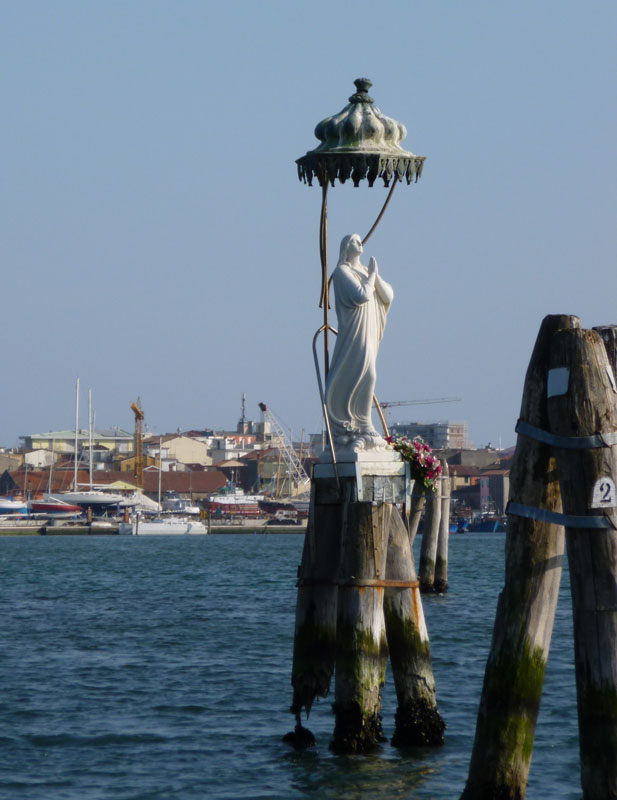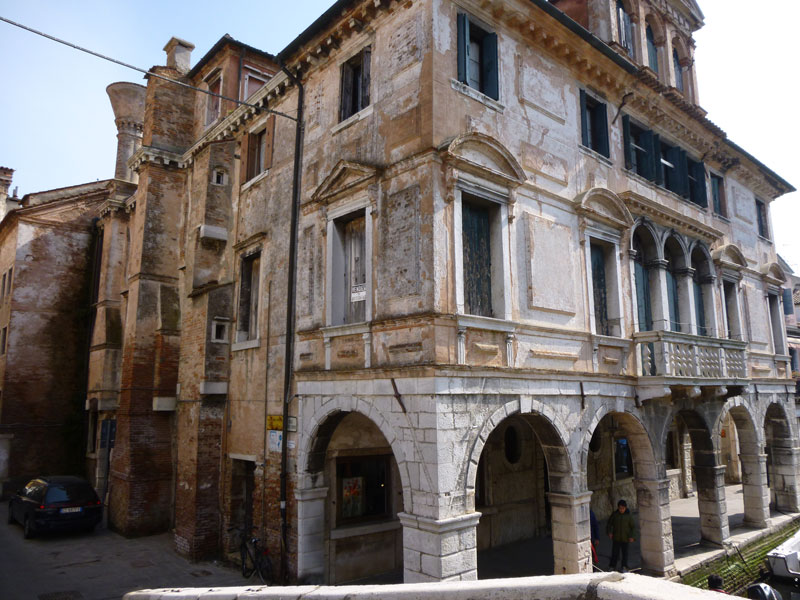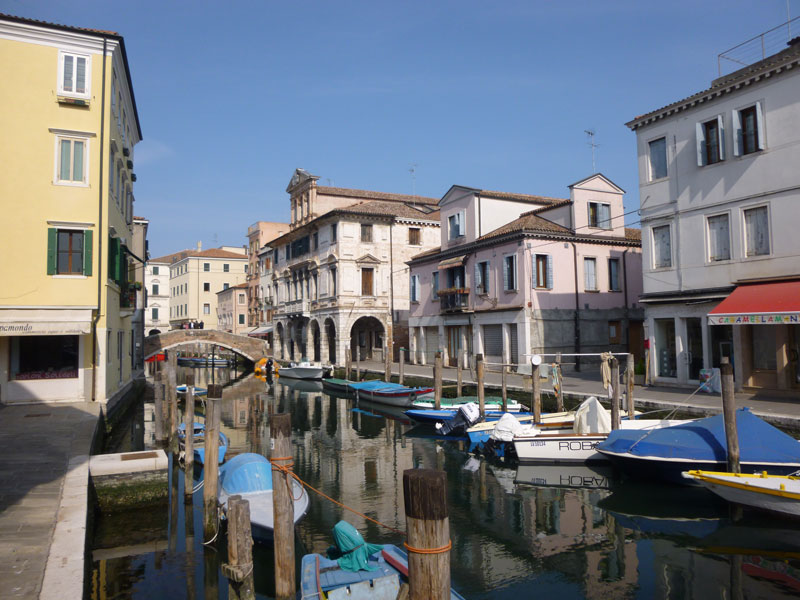Chioggia is an unpretentious fishing town at the southern end of the Venetian lagoon. Like Venice it is built around canals and boats, but otherwise it is very different and makes an interesting excursion from Venice.
About Chioggia
Chioggia is in the Veneto region of Italy, a medium-sized fishing port just inside the Venetian lagoon with easy access to the Adriatic. It can be reached by public transport from Venice, and makes an unusual day-trip destination. It has several picturesque spots and a slower, more ordinary, pace of life than Venice. The town’s morning fish market is a popular sight, and its seafood restaurants are highly-praised. Chioggia fancies itself as a ‘little Venice’, but apart from one or two imposing buildings and churches, it is more like an image of what Venice might be had it never discovered the splendid riches of trade.
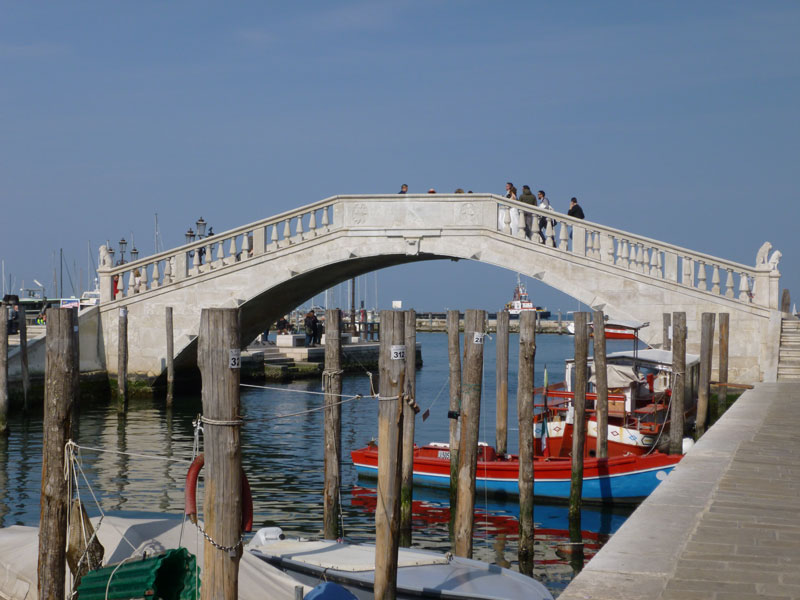
The historical part of Chioggia is on an island in the lagoon. It’s separated from the sea by the lagoon’s southernmost rim, a strip of land over which is built a modern seaside town called Sottomarina. Chioggia’s geography is simple: one wide central street, Corso del Popolo, runs the length of the island from north to south. Parallel to this, a block to the east, is a picturesque canal called the Vena. Side-streets run neatly off at right angles, although nearly all the town’s most interesting tourist sights lie on the main Corso.
If you’d like a taste of Chioggia on screen, the Netflix series I Hate Christmas (Odio il Natale) was filmed here and will give you an enticing taste of the scenery.
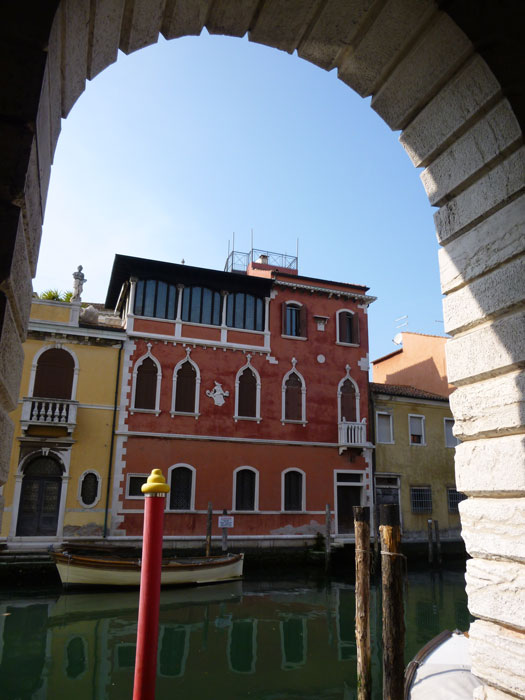
As a day trip
If you are travelling to Chioggia as a daytrip from Venice, you’ll find that the journey to Chioggia via the Lido takes a long time, but is interesting in itself with its views of the lagoon and the sea walls. The ferry from Pellestrina (and Venice) docks in a little harbour to the north of the island, alongside a small square, Piazzetta Vigo. In the centre is a famously tame Venetian lion atop a marble column. Corso del Popolo stretches off in a haze of cafe-tables.
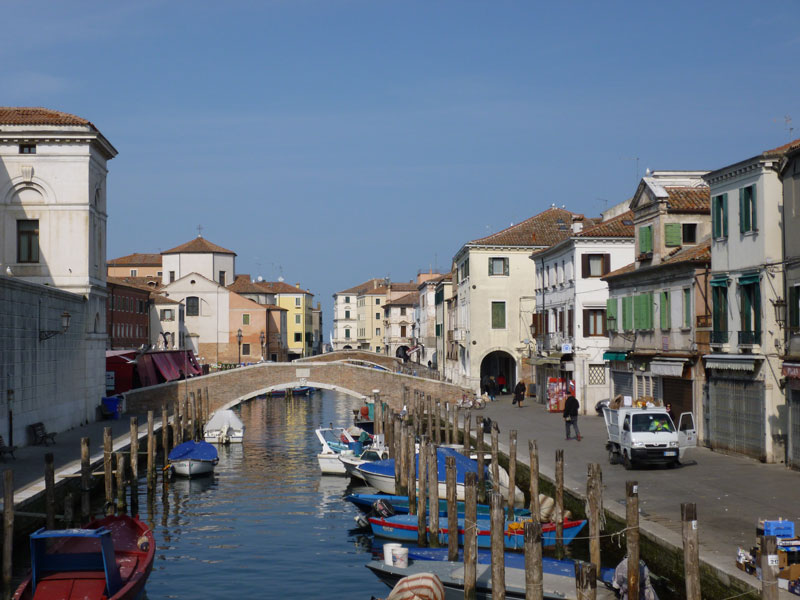
History
Chioggia has ancient origins, being ideally placed for seagoing and defensive purposes. Etruscans settled here, and in Romans times the town was called Clodia. Chioggia grew in importance at the same time as the other Venetian lagoon settlements, when mainland-dwellers were seeking safer homes. The town’s most famous moment came when it was part of the Venetian Republic, and Venice finally defeated Genoa here in the Battle of Chioggia. The town then subsided into a quiet fishing port, which is still pretty much its status today, although the seaside Sottomarina area has reinvented itself as a modern beach resort. Apart from the great sea-battle, one other historical event to which you’ll see references around town is a local apparition of the Virgin Mary.
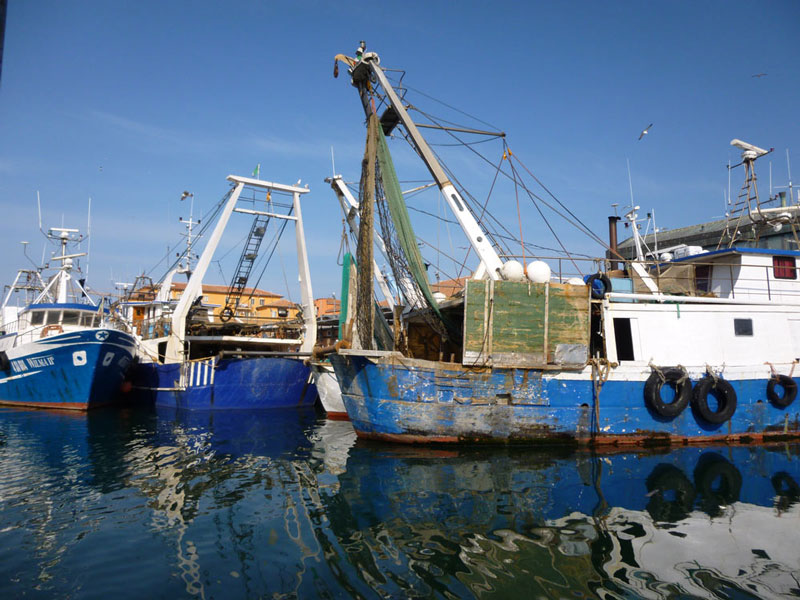
Tourist sights
Chioggia has two museums, several interesting churches and a few fine works of art. Opening hours of the museums are restricted, while churches close at lunchtime and for the early afternoon, so plan carefully if you are counting on visiting them. There are not a lot of vital sights, and if you’re escaping Venice for the day, it may be enough to be away from that city’s bustle, to potter along the pedestrianised stretches of street and maybe sample the seafood for which Chioggia is renowned.
Leaving Piazzetta Vigo over the white marble bridge to the east, guarded by stone lions, you can pause to enjoy appealing views along the Vena canal, lined with fishing boats.
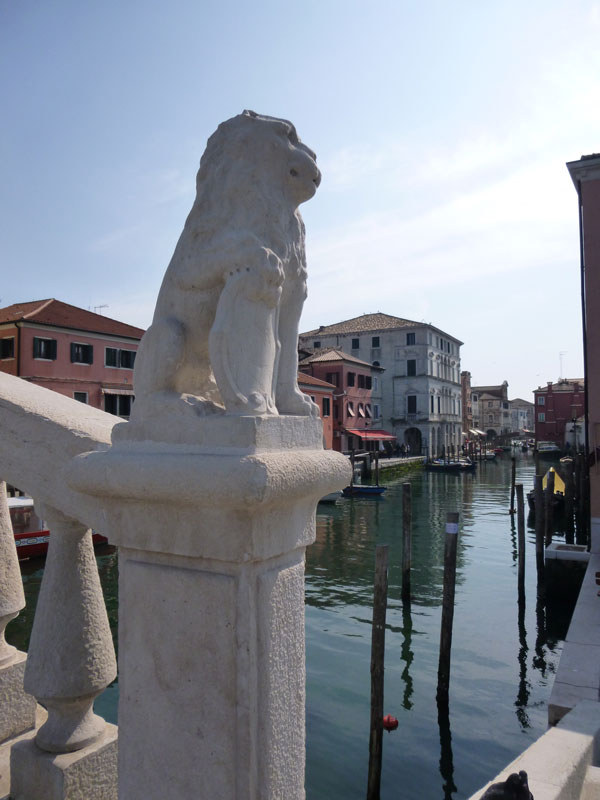
Continuing straight on from the bridge you’ll come to the Chiesa di San Domenico, one of the only tourist sights not on the main street. The church sits on its own little island, and contains one of Chioggia’s greatest treasures: Vittore Carpaccio’s St. Paul, his last recorded painting. There are also works by Tintoretto and Bassano, and a venerated wooden crucifix (“the oldest in the world” the sacristan informed me with pride). The crucifix was restored by Save Venice and you can read more about it here. Through a grille in the church you can see a collection of local ex-voto images (read on for more about these).
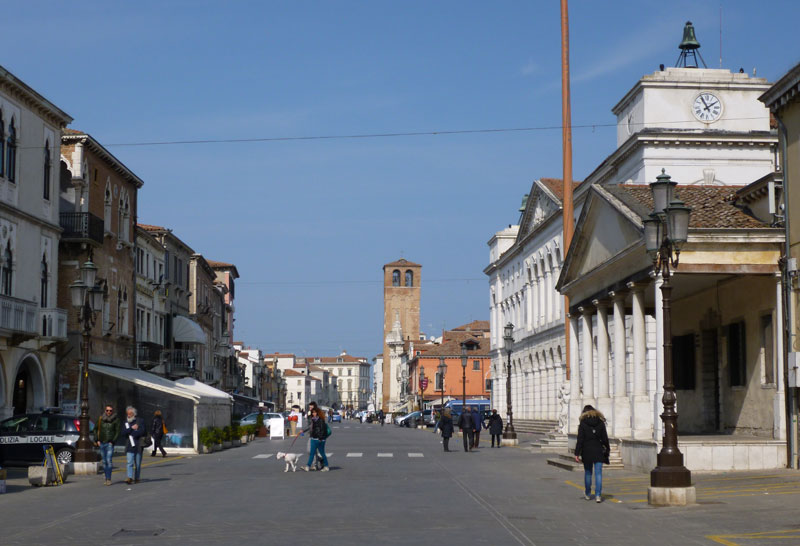
Returning to Corso del Popolo, the tourist can potter onwards through town, past cafes and restaurants with tempting outside tables. The street’s an attractive one, with a few interesting buildings and several shops which seem to be in a picturesque time warp.
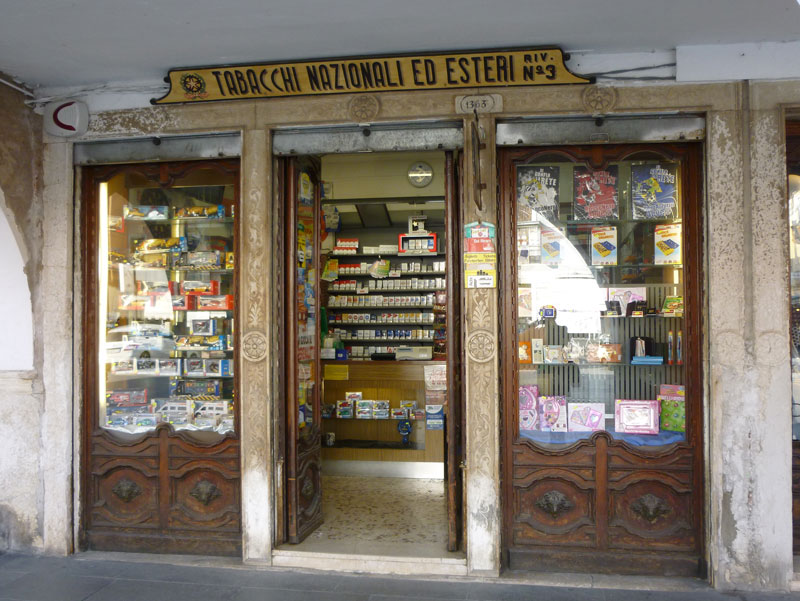
The next interesting church is the Chiesa di San Giacomo Apostolo. The building and its decoration are fruits of an eighteenth-century redesign. Inside, the main altar contains an icon commemorating the appearance of the Virgin Mary to a local peasant in 1508, first on a log washed up on the shore, then aboard a small boat with Jesus in her arms; the log is preserved here. This sighting, the Madonna della Navicella, is represented many times in the ex-votos displayed on the walls in the church. These items, locally called tolele, are tokens of gratitude for miraculous escapes from death, illness and disaster. They are charming, naive works: fires on boats, fishermen tossed about in storms and children falling out of windows. The Madonna della Navicella (you come to recognise her after a short time in Chioggia) is often included as the source of the miracle, alternating with favourite saints and Jesus. The tolele are worth a good look for themselves and for their period detail (most date to the late nineteenth century) – with scenes ranging from the interior of an elegant lady’s boudoir to a peasant being chased through the fields by a strange-looking animal.
Chioggia’s cathedral, or Duomo, is at the far end of the Corso; a grand building designed by Baldassare Longhena, architect of the Salute church in Venice. The interior is painted white, with solid-looking columns and coloured marble altars. Dominating the nave is a fine, imposing marble pulpit with an ornate gold canopy. The seventeenth-century main altar is also very fancy, and features some remarkably ugly carved cherubs as well as attractive inlaid decorations. On either side of the main altar is an elaborate side-chapel. The one on the right is decorated in gilt, pink and white like an over-the-top drawing room. The left chapel is dedicated to the town’s patron saints, Felix and Fortunatus, and is filled with paintings depicting their story, which is also recounted in a text below. Tortured by the Romans in 303AD, these two Christians then had their corpses squabbled over by the two towns of Vicenza and Aquileia. According to the tale, the argument was resolved successfully when each town received the head of one saint and the headless body of the other. The chapel also has a more peaceful embellishment; an attractive stained-glass window from the end of the nineteenth century.
Outside the Duomo stands its tall fourteenth-century campanile, which is older than the present incarnation of the main church. The pretty Gothic church of San Martino, alongside, also dates to the fourteenth century; sadly it is only open for services. Some of its finest works of art, however, have been removed to a museum around the corner.
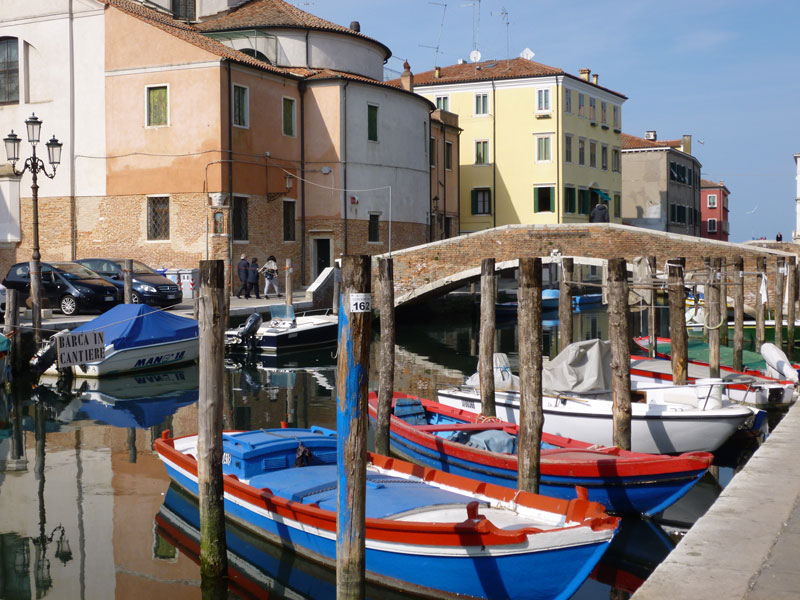
The town’s museums are at the far end of the island from the boat stop. Both are more worthy than they are fascinating, and their information boards are mostly in Italian.
The Museo Diocesano d’Arte Sacra is around a corner to the right, after the Duomo. In a smart new building, the museum collects together treasures and oddments from Chioggia’s churches. The highlights are two polyptychs attributed to Paolo Veneziano. Also housed here are many reliquaries, some more charming ex-votos, portraits of local bishops (including one very sinister-looking character), and more paintings, including works by (or attributed to) Cima da Conegliano and Palma il Vecchio. Also on proud display is a large, long canvas portraying a sixteenth-century procession to the site of the apparition of the Madonna della Navicella, with Chioggia in the background. A few of the information boards in the museum are in English as well as Italian. Opening times are limited, so check ahead: Museo Diocesano (Italian)
The Museo della Laguna Sud is close by, across the canal and on the left. The building was once a church dedicated to St. Francis; later it was used as a bus depot. This too is a recent and probably costly exhibition, this time of artefacts, pictures and information relating to the southern part of the lagoon. It includes models of boats, agricultural equipment, some paintings and copious information in Italian. There’s an admission charge, and this museum too has limited opening times which vary through the year. The front desk acts as Chioggia’s tourist information office and you’ll be able to pick up maps and information leaflets. Museo della Laguna Sud (Italian)
As you return from the museum, note the traditional boats moored alongside, and the stone gateway, the Torre di Santa Maria (later the Porta Garibaldi) at this old entrance to the town.

Stay in Chioggia
In the historic centre of Chioggia, the best-placed hotel is the Hotel Grande Italia, right by the waterfront. There are also a few good B&Bs in the historic part of town. Across the water in the the resort area of Sottomarina, you’ll find a selection of typical seafront hotels.
> Read more about the Hotel Grande Italia / make a booking
> Other hotels and B&Bs in Chioggia and Sottomarina
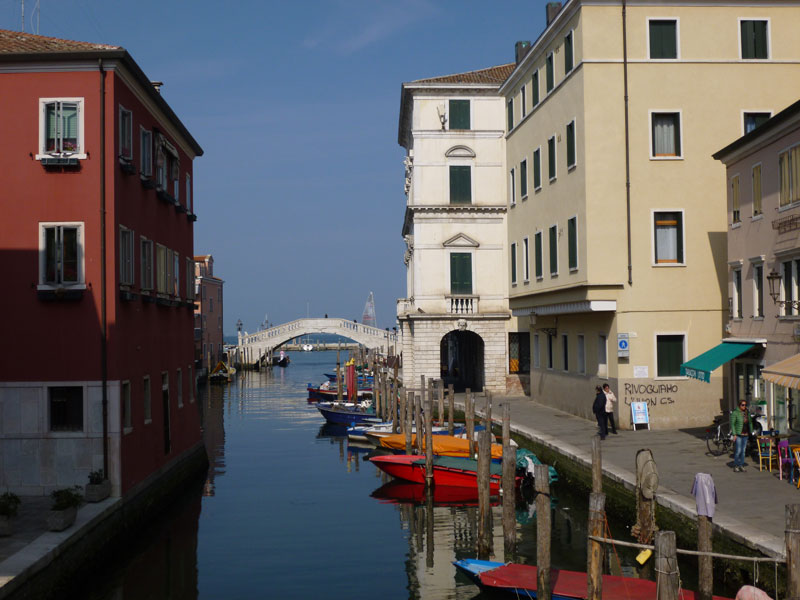
Activities, excursions and beaches
A short boat trip around the Chioggia and Sottomarina waterways is a fun and lively way to see the town. On one of my visits to the town I took a trip in the Bragozzo Ulisse, which runs excursions from Piazzetta Vigo as well as operating shuttle and taxi services – I really enjoyed the chance to see the fishing boats up close and get a different perspective on the town.
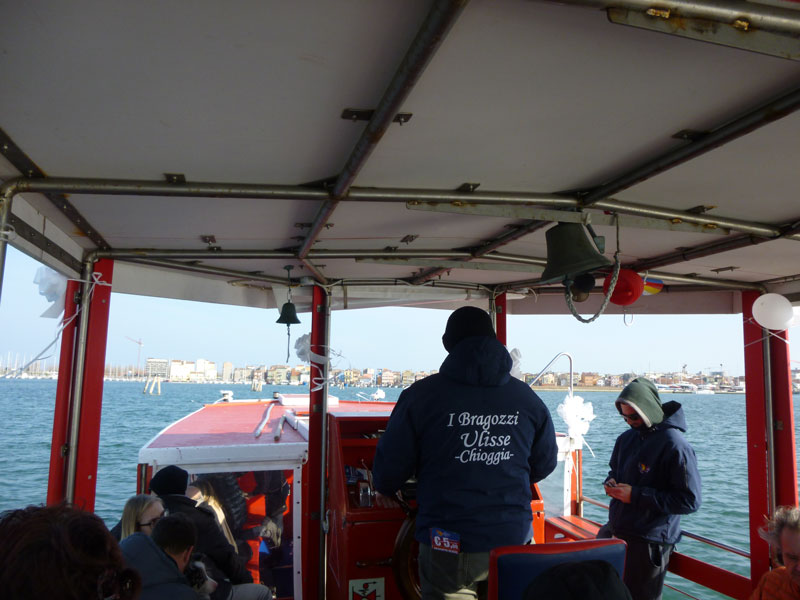
The tourist board of Chioggia and Sottomarina publishes copious amounts of colourful tourism material, urging visitors to try their area. Wisely avoiding competition from Venice, they focus on the local nature reserves, the long wide beach of Sottomarina and activity holidays. The beach is large but regimented in the Italian style: lots of beach establishments where you pay to rent a sunbed alongside rows of other holidaymakers.
For something more adventurous, you could try boating or cycling. Boats of various kinds can be hired, with sea, lagoon and inland waterways to explore.

Cycling is a popular activity in and around Chioggia, and is a good way to explore the area, including the popular ride along the narrow islands of the Lido and Pellestrina.
For a day trip to Venice, an alternative to the regular public transport options is a once-daily boat heading directly from Chioggia to Venice. Buses also run to Venice, and to nearby Padua.
> Travel from Venice to Chioggia
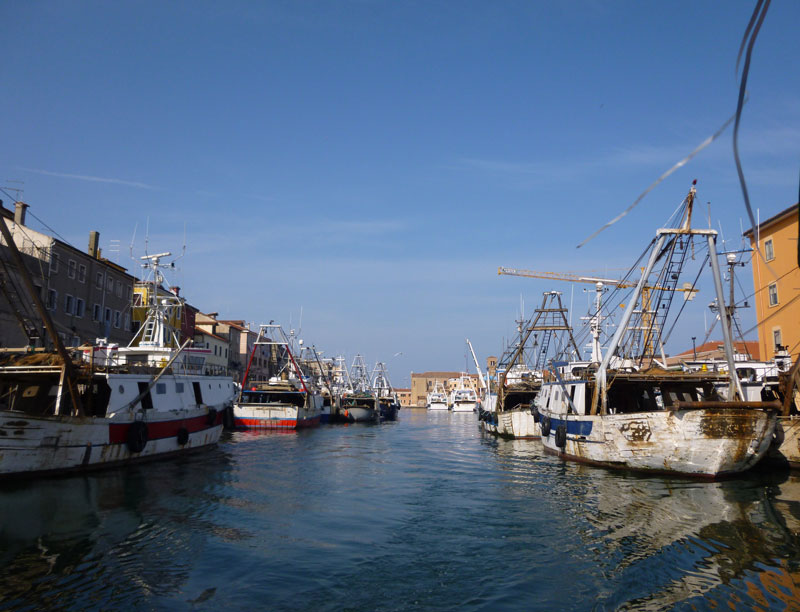
Veneto destinations
- Veneto region
- Abano Terme
- Asolo
- Bassano del Grappa
- Brenta Canal
- Caorle
- Castelfranco Veneto
- Chioggia
- Cittadella
- Concordia Sagittaria
- Conegliano
- Cortina d’Ampezzo
- Lido di Jesolo
- Malcesine
- Marostica
- Monselice
- Montegrotto Terme
- Padua
- Portogruaro
- Rovigo
- Sottomarina
- Treviso
- Venetian Lagoon
- Venice
- Verona
- Vicenza
- Veneto art & architecture itinerary
- Veneto villas – Vicenza: La Rotonda & Villa Valmarana ai Nani
- Veneto villas – Villa Pisani & Villa Foscarini Rossi, Strà
- Venice Airport
- Treviso Airport
